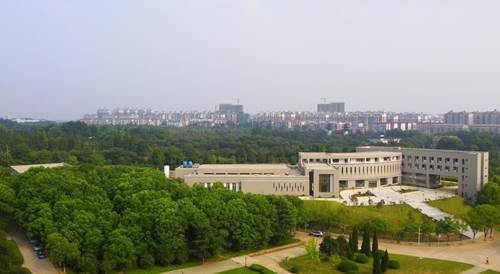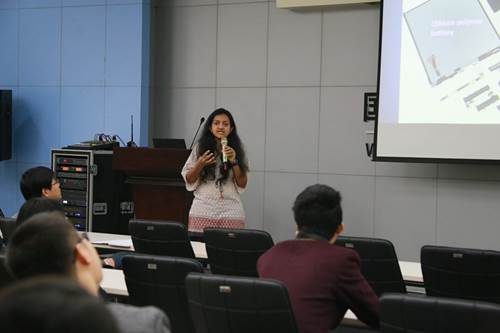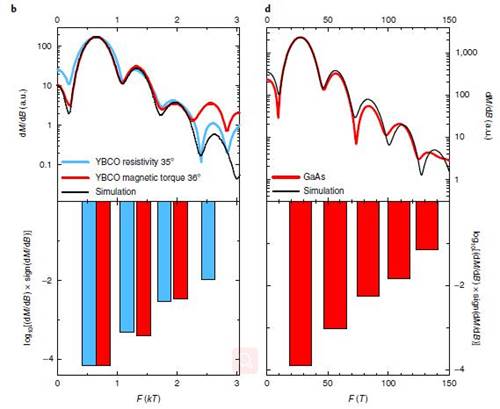Recently, the Wuhan National High Magnetic Field Center (WHMFC) received an email from Professor Suchitra Sebastian of Cavendish Laboratory, University of Cambridge, UK., saying "Due to the outbreak of Covid-19 epidemic, our team cannot go to Wuhan as usual to do experiments at the WHMFC. I feel very sorry and hope to continue to cooperate with WHMFC after the epidemic ends."

Suchitra Sebastian is an old friend of the WHMFC. The regret she expressed also exists in the hearts of the many frequent visitors of the WHMFC from all over the world. Suchitra Sebastian came to the WHMFC for the first time on October 26, 2016. At that time, she was carrying out a research on quantum materials. Before that, she had conducted some experiments in high magnetic field laboratories in the United States and Europe, but the measurement accuracy of PDO (contactless resistance) in similar foreign facilities has not been ideal. After comparison, Suchitra Sebastian finally chose China's pulsed high magnetic field facility. With the help of Professor Zhu Zengwei and Engineer Zuo Huakun of the WHMFC, the data she finally obtained were far better than the PDO experimental data abroad. In the past three years, Suchitra Sebastian and her team have applied for a total of 1,115 hours of experimental machine time.

The picture shows Suchitra Sebastian introducing international frontier research to the WHMFC's teachers and students.
In May, Suchitra Sebastian made phased progress in her work. With the help of the experimental conditions of the pulsed high magnetic field facility at the WHMFC, her research team has obtained the information about quantum oscillation and Fermi surface in YBCO, thus revealing that the quantum oscillation related to small Fermi pocket in copper-based superconductor has the characteristics of an isolated two-dimensional Fermi surface pocket. The relevant results are published in the recent journal of the Nature Physics.

The picture shows the signs of quantum oscillation with a single two-dimensional Fermi surface in the copper matrix found by Suchitra Sebastian's team.
"China's pulsed high magnetic field facility is one of the best similar facilities in the world and provide us with the best technical support. Without these experimental conditions and services, it would be difficult for us to carry out the research." As Suchitra Sebastian said, the WHMFC has the world's leading pulsed high magnetic field facility, to provide 24-hour on-line machine time application a day, dedicated personnel responsible for user service, pre-experiment safety training, accommodation and diet arrangements during the experiment, etc., all of which have played a role in escorting users to carry out research.
Suchitra Sebastian is not an individual case. The Centre National de la Recherche Scientifique (CNRS) is the largest national scientific research institution in France, where Professor Kamran Behnia is engaged in experimental research on condensed matter physics. Since 2016, Kamran Behnia began collaborating with the WHMFC. Each year, he spends about a month doing experiments at the WHMFC and collaborates with the WHMFC’s researchers in publishing nearly 10 papers on the Nature Communications, Physical Review Letters, Science-Advances, etc.
According to statistics, the international users of the WHMFC mainly come from the United States, the United Kingdom, Germany, France, Australia, South Korea, Japan and other countries. The WHMFC has provided the facility for 27 internationally renowned scientific research institutions such as Harvard University, Stanford University, University of Cambridge and Dresden High Magnetic Field Laboratory (HLD) in Germany to carry out 63 experiments, with 3,743 experimental hours provided. Opening and sharing the facility to global users not only meets the needs of foreign scientists to carry out high-level research activities and establishes a stable cooperative relationship with them, but also wins the recognition and praise from international peers for the WHMFC and enhances its international popularity and influence.

The picture shows foreign scientists carrying out experiments with pulsed high magnetic field facility at the WHMFC.
in addition to having advanced experimental facilities and high-quality user services, the WHMFC's opening and sharing levels have gradually ranked among the best in the world. In 2019, the WHMFC discharged 21,574 times in total throughout the year, completing 11,649 hours of effective machine time, of which 8,960 hours were open to the outside world at an opening rate of 77%, with 224 research topics completed and 160 SCI papers published. Both the open machine time and research results ranked among the best level of similar facilities in the world, becoming one of the important scientific research centers in the field of international high magnetic field.
Source: Wuhan National High Magnetic Field Center
